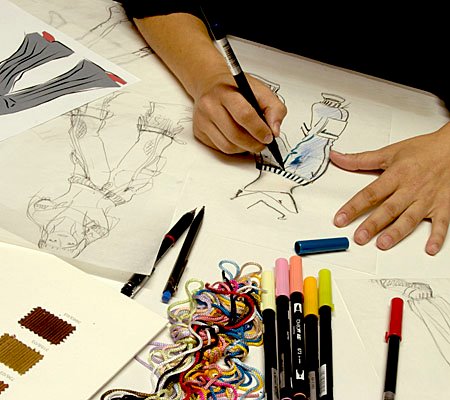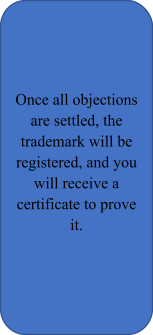This article is written by Janhavi Sitaram Dudam who is pursuing a Diploma in Intellectual Property, Media and Entertainment Laws from LawSikho.
Table of Contents
Introduction
Fashion is a phenomenon that exists in civilization. The primary aim of fashionable goods is to meet aesthetic needs while also displaying the owner’s social standing. In expressing their individuality, fashion helps to illustrate distinctions between people, affiliations to various social classes, as well as defining their needs and desires.
For example, youth fashion may distinguish people of different ages, and personal luxury goods selection emphasizes self-expression and a person’s individual status.
Growing the popularity of a lifestyle is related to the expansion of fashionable goods. If in the past, eating and washing clothes were strictly private activities, in today’s society, fashionable goods include more than just clothes, shoes, and accessories, which fall into the 18th and 25th classes of the Nice Classification of Goods and Services. Moving from a narrow to a wider view, it is worth noting that fashion can be related to almost all personal goods consumption, including vehicles, furniture, pens, and so on.
The fashion industry differs from other types of manufacturing in that it is primarily driven by transformation. Major characteristics such as the dynamic and intensity of production processes, rapid reaction to market demands and emerging trends, high competition, and the importance of creating and sustaining a positive image can be used to identify this market, which has a direct impact on customer behaviour and decisions – which products to purchase and from which manufacturer.
So, do you want to develop your fashion brand in the United Kingdom (UK) market, or do you want to take your fashion brand from a national to an international market? If that is the case, this article is for you.
To know more about Trademark please visit
Governing Act
The Trademarks Act, 1994 regulates trademark law in the United Kingdom. The act gives force to the EU Trademark Directive (2015/2436) and the EU Trademark Regulation (2017/1001), allowing EU trademarks to be used in the UK.
The United Kingdom is a member of the World Intellectual Property Organisation and a signatory to several international treaties relating to trademarks, including:
- The Paris Convention for the Protection of Industrial Property.
- The Protocol Relating to the Madrid Agreement Concerning the International Registration of Marks.
- The Singapore Treaty on the Law of Trademarks.
- The Trademark Law Treaty.
- The Agreement on Trade-Related Aspects of Intellectual Property Rights.
- the Vienna Agreement Establishing an International Classification of the Figurative Elements of Marks; and
- The Nice Agreement Concerning the International Classification of Goods and Services for the Purposes of the Registration of Marks.
For obtaining registration of a trademark in the UK, you need to apply it before the UK Intellectual Property Office (UKIPO).
Procedure for applying to register a trademark
If no one objects, the registration process takes about 4 months. Trademark registration is valid for 10 years in the UK. The registration of a trademark in the UK only protects your brand in the UK. The procedures for registering European Union (EU) and international trademarks are different.
To know more about Trademark registration please visit
A. Check if your brand qualifies as a trademark
For that, you need to understand what you can and cannot register as a Trademark
Your brand must be distinct. It may consist of words, sounds, logos, colors, a combination of any of these. Your Brand cannot:
- Contain offensive content, such as swear words or pornographic images.
- Describe the goods or services it would be used for; for example, a cotton cloth manufacturer cannot use the word “cotton” as a trademark.
- Be deceptive, such as using the word “organic” to describe products that are not organic.
- Be a three-dimensional shape associated with your brand, such as use the shape of an egg for eggs.
- Be too common and non-distinctive.
- Look too similar to state symbols like flags or hallmarks, based on World Intellectual Property Organization guidelines.
B. Check if your trademark is already registered
Before submitting your application, you must search the trademark database to see if someone has already registered an identical or similar trademark for the same or similar products or services.
You may seek permission to register your own trademark from the holders of an existing one. They must provide you a “letter of consent,” which you must attach to your application.
When it comes to searches and registrations, you should hire a trademark lawyer to help you.
Series applications
You can file a series application for up to six marks if you have similar versions of your trademark.
All of the marks should be:
- Look the same,
- Sound the same, and
- Have the same meaning.
- Any variations must be minor.
C. Apply for Trademark
If you’ve applied for a trademark, you can’t change it, and the charges are non-refundable. Within 12 weeks (60 working days), you will receive feedback on your application which is also referred to as ‘examination report’. For that, you will need the following:
- Information about what you want to register, such as a word, an illustration, or a slogan.
- The trademark classes you want to register in, for example, food and drink services (class 43) or chemicals (class 1).
Fees for Registration
If you want to make sure your application complies with the registration rules, you can use the ‘Right Start’ service.
Initially, you will have to pay £100, and then £50 for each additional class. After that, you will get a report indicating whether or not your application complies with the rules.
You must make payments within 14 days of receiving your report if you want to proceed. You have the option of continuing the application even though it does not fulfill the registration requirements.
A series application for three or more marks costs an additional £50 per mark.
Other ways to apply
If you want to apply by post, fill out the paper forms. One class cost £200, plus £50 for each additional class.
D. After you apply
2)
3)
If your application is opposed
If anyone objects to your application, the Intellectual Property Office will inform you.
You can either choose from the following options:
- Withdraw your application.
- Talk to the person making the opposition.
- Defend your application.
You cannot register your trademark until the matter is settled and may have to pay legal costs if you want to challenge the opposing party.
Once your trademark is registered
- You must report any changes to your name, address, or email address.
- You have the right to object to other people’s trademarks if you believe they are identical or similar to yours.
- You can sell, market, license, and mortgage your trademark.
Your trademark will last 10 years – you can renew it after that time.
Checklist for applying to register a trademark
Advantages of registering a trademark
When you register your trademark, you’ll be able to:
- Take legal action against someone who uses your brand without your permission, including counterfeiters.
- Add the ® symbol to your brand to indicate that it’s yours and warn others not to use it.
- Sell and license your brand.
Brand owners need to understand where risks exist and how they can protect their trademark rights and brand image while still ensuring their ability to do business in various countries using those trademarks and branding.
When confronted with a bad faith trademark application, a rights holder must evaluate the effect and potential courses of action in light of the applicable jurisdiction’s law to decide how to respond.
The following are examples of common bad faith trademark applications across jurisdictions:
- Pre-emptive filing of a trademark where the prior user lacks a registered right in the relevant jurisdiction, particularly to trade using the prior user’s goodwill.
- Filing several trademark applications without intending to use them, perhaps to prevent a prior applicant from entering the market, or to negotiate the payment of a license fee or a fee for an assignment of rights.
- Applications made for a brand by the relevant entity’s agent or representative.
- Offensive filings, such as applications submitted by current, former, or soon to be former, business associates or employees known to the trademark owner, to use registered rights against the rightful owner as a bargaining tool or to gain an upper hand in a dispute.
- Filing an application for a trademark that is confusingly similar to a well-known trademark, but for different goods and/or services, with the intent of unfair leveraging the trademark owner’s goodwill, or as a deterrent to the owner taking action to stop sellers of products using similar branding and/or packaging.
Case Studies where registry refused to register a mark
- Sporting Kicks Ltd’s application 2376955, 11 November, 2005
In this application, the sign “Inter City Firm” in connection with clothing and footwear was refused registration as such sign was the name chosen by a well-known English football hooligan group mainly active in the 1970s, 1980s, and early 1990s and associated with the football team West Ham United. As noted by the Registrar, a Chelsea football fan seeing a West Ham fan wearing a shirt bearing the sign in question could easily be provoked into violence. Therefore, the registrar held that this trademark constitutes a form of anti-social branding and is likely to cause alarm or distress.
- Ghazilian’s application No 2232411, the decision of the Registry on 28 November, 2001
In 2011 the sign “Tiny Penis” was refused registration because it was considered contrary to current principles of morality (the products were articles of clothing). The Court held that a distinction should be drawn between an offense that amounts only to distaste and offense which would justifiably provoke outrage or would be the subject of justifiable censure as being likely to undermine current religious, family, or social values.
Common mistakes made by business owners while filing a trademark application in the UK
If you want to protect your brand, you must first register a trademark. There is, however, a right and wrong way to go about it. We have compiled a list of five of the most common mistakes businesses make when filing a UK trademark application to assist you in avoiding them.
- Lack of searches
It’s critical to determine if similar trademarks already exist in your industry before filing a trademark application. This entails doing a thorough search of the trademark database, rather than relying solely on a Google search. If your proposed trademark is confusingly identical to an established trademark, you’ll need to reconsider or reach an agreement with the owner of the trademark. If you do not take these precautionary measures, you are facing costly legal action.
- Errors in specification
You must identify the goods and services for which the trademark will be used – both now and in the future – when you apply to register a trademark. This is referred to as drafting a specification. It involves specifying the correct classifications for your goods and services, as well as explaining their scope precisely. If the specification is too narrow, wrongly worded, or in the wrong class, it cannot satisfy the business needs adequately. Likewise, if you draft a specification that is too broad, you are more likely to step on someone else’s toes, and you might even be considered to be ‘acting in bad faith’. In either case, you might find that your trademark application is practically irrelevant when it comes to relying on it.
- Not filing a wordmark
A brand may have a logo along with a name. Trademarks can be registered for both the logo and the words. Device marks and wordmarks are the terms for these marks. Despite the fact that word marks almost always provide more security, some businesses ignore the need to file one.
This is because it allows you to use the protected terms in whatever format you choose. In contrast, a device mark only covers the registered logo. This can be very restrictive and relying on it to deter an infringer cannot provide the level of security you need.
- Series applications mistakes
If you have many variations of your trademark, filing a ‘series’ application could be more cost-effective. Series applications, on the other hand, have very specific requirements.
In fact, only about 60% of applications are approved. To make sure you’re one of them, you should know what constitutes a series and how to reflect series marks on the application form. Your application will be denied if the marks are substantially different.
- Delays in filing
Running a business is a difficult task, and you’re probably preoccupied with the day-to-day operations of your company. As a consequence, it’s all too convenient to place the trademark application on the back burner. However, if you do not move fast enough, someone else will be able to beat you to it.
This can be devastating, and you need to rebrand your business as a result. Otherwise, if you try to register a trademark that is similar to someone else’s, you could face a Notice of Threatened Opposition.
Conclusion
Therefore, upon careful analysis of every step in applying for a registration of trademark and achieving trademark protection in the fashion industry of the UK, we can conclude that it is strongly advised to conduct a preliminary search before applying for a new trademark in order to discover potential prior rights for similar marks to prevent potential legal proceedings and the risk of having to rebrand.For fashion trademarks, it is often best to carefully consider the inclusion of a descriptive wording or phrase and to avoid using fanciful terms or phrases. If a trademark application receives a provisional refusal on relative grounds, it is recommended that you consult with an experienced trademark lawyer to determine your options and chances of success in overturning the refusal and securing legal protection.
A well-connected and competent trademark lawyer may assist you in obtaining rights for your trademark in the United Kingdom. If the worst happens and anyone steals your brand, your lawyer will be able to help you decide what to do. They deal with these issues regularly with their clients. Contrary to popular belief, results can often be obtained rapidly and at a low cost. This may include using cease and desist letters to try to put an end to the infringing activities right away. If problems do arise, your lawyer will be able to advise you about how to respond to them. for example, possible defenses in infringement cases. So, it is advisable to take advice from a competent trademark lawyer to set up or grow your fashion brand in the UK.
References
- https://iprgroup.info/trademarks-in-the-fashion-industry-digest-03-2020/
- https://www.worldtrademarkreview.com/brand-management/trademark-procedures-and-strategies-united-kingdom
- https://www.worldtrademarkreview.com/portfolio-management/trademark-procedures-and-strategies-united-kingdom
- https://www.gov.uk/how-to-register-a-trade-mark
- https://www.gov.uk/how-to-register-a-trade-mark/what-you-can-and-cant-register
- https://www.gov.uk/how-to-register-a-trade-mark/apply
- https://www.gov.uk/how-to-register-a-trade-mark/after-you-apply
- https://www.wardtrademarks.com/common-mistakes-businesses-make-when-filing-a-uk-trade-mark-application/
- https://gowlingwlg.com/en/insights-resources/articles/2019/bad-faith-trademark-applications/
Students of Lawsikho courses regularly produce writing assignments and work on practical exercises as a part of their coursework and develop themselves in real-life practical skill.
LawSikho has created a telegram group for exchanging legal knowledge, referrals and various opportunities. You can click on this link and join:

















